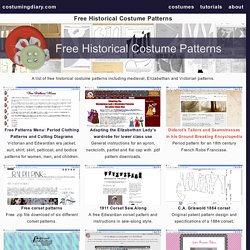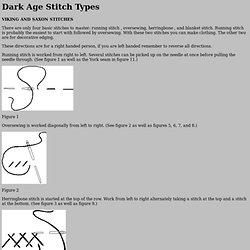

Adventures in Historical Tabletweaving: footwear. Warp: SilkWeft: SilkBrocade: SilkPattern: 15th century chasuble.

Munich (EPAC p. 144)Cards: 9/21Width: 6mm/12mmLength: 60cm/60cm For my first band I picked the pattern in EPAC which used the fewest cards. It is from a linen band from a 15th century chasuble. The design is a simple geometric consisting of diamonds and diagonal bars and I think it would not be out of place on 12th century garb. The purpose of this project was to make garters for my dark blue woolen hose. The warp, ground weft and brocade weft are all of Schappe silk from fibreholics. Since this was my first band and I wanted to tax my brain as little as possible, I brought the brocade weft all the way to the edge of the band at every pass ("Type 1" turn in EPAC).
The band went well once I got going. The second band used 21 cards. The band went pretty well but there are two aspects I'm unhappy with. The other issue I had was that the weft tension varied wildly, so the width of the band fluctuated from about 0.9 to 1.3 cm. Free Historical Costume Patterns. A list of free historical costume patterns including medieval, Elizabethan and Victorian patterns.

Free Patterns Menu: Period Clothing Patterns and Cutting DiagramsVictorian and Edwardian era jacket, suit, shirt, skirt, petticoat, and bodice patterns for women, men, and children. Adapting the Elizabethan Lady's wardrobe for lower class useGeneral instructions for an apron, neckcloth, partlet and flat cap with .pdf pattern downloads. Diderot’s Tailors and Seamstresses in his Ground Breaking EncyclopediaPeriod pattern for an 18th century French Robe Franciase. Gérard Lognon: quand le plissage est art. Les Ateliers Gérard Lognon.

Le monde du textile regorge de métiers et de techniques souvent méconnus du grand public. Et c’est là tout l’intérêt de notre blog ! Alliant technique, tradition et créativité, les métiers d’art du textile sont en général réservés au secteur du luxe et de la haute couture et c’est surement la raison pour laquelle, leurs secrets sont très jalousement gardés. Gérard Lognon, lui, est plisseur. Depuis son arrière grand-mère (sous Napoléon III), le métier se transmet dans sa famille pour faire, aujourd’hui, de cet artisan la quatrième génération de plisseur. Atelier Gérard Lognon - Interview. Braid Patterns. This page is part of the Fingerloop Braids Website.

Page Index New Skill: Linked or Departed Bowes5. A lace baston -- c. 1475 New Skill: The Lateral Exchange Move New Skill: 2 Bowes on One Finger New Skill: Two and Three Workers New Skill: 3 Workers23. the Katheren wheele -- c. 1630 New Braids not in Compleat Anachronist # 108 1. a brode lace of v bowes -- c. 1475 Appearance If you use, for example, green on the R hand and white on the L hand, you get a thin, flat braid with a zigzag of green on a ground of white. Source Transcription For to make a brode lace of v bowes: Set ij bowes on B and C ry[3]h, and iij bowys on A, B, C lyfte.
Translation For to make a broad lace of 5 bowes: Set 2 bowes on B and C right, and 3 bowes on A, B, C left. Directions 2. (One color version: a round lace of v bowys -- c. 1475) Appearance: Two-color version: if you use green on the R hand and white on the L hand, you get a square braid with green chevrons on a white ground. Fingerloop Braid Patterns. Costuming. Dorie Millerson. Stitch and Seam Guide for the Clothing Industry. Dark Age Stitch Types. There are only four basic stitches to master: running stitch , oversewing, herringbone , and blanket stitch.

Running stitch is probably the easiest to start with followed by oversewing. With these two stitches you can make clothing. The other two are for decorative edging. These directions are for a right handed person, if you are left handed remember to reverse all directions. Running stitch is worked from right to left. Figure 1 Oversewing is worked diagonally from left to right. Figure 2 Herringbone stitch is started at the top of the row.
Figure 3 Blanket stitch is worked from left to right. Figure 4 The hem is the seam at the edge of a piece of cloth, how you sew the hem depends on how thick the cloth is. The rolled seam in figure 5 is only suitable for fabrics such as silk or very fine linen. Figure 5 The hems in figures 6 and 7 are from Haithabu. Figure 6. Sewing. Zweimal abgeschnitten und immer noch zu kurz.